Avea NutraMedix 30ml
- Add feedback:
- Code: 8269
- Manufacturer: Nutramedix
-
Availability:
 Exists
Exists
- szt.
- 16.30 € 15.68 €

Avea 30 ml
FOR RESOLVING MILD, MODERATE AND SEVERE DEPRESSION
General Description
Avea is an extract produced from the root of Curcuma longa, commonly known as turmeric. Turmeric has long been used in both Ayurvedic and Chinese medicine as an anti-inflammatory, to treat digestive disorders and liver problems, and for the treatment of skin diseases and wound healing. Recent published studies have been addressing the anti-depressant properties of Avea. Via the proprietary extraction and enhancement process utilized to produce Avea, the product has been enhanced to address the majority of the causes of endogenous depression. Patients suffering from depression report relief within a few hours to a few days after starting the use of Avea.
Some Reported Medicinal Properties
• ANTIDEPRESSANT
• ANTI-INFLAMMATORY
• ANTIMICROBIAL
• ANTIMUTAGENIC
• ANTIOXIDANT
• ANTITUMOR
• CHOLECYSTOKINETIC
• DEPURATIVE
• FUMITORY
• HEMOSTATIC
Medical Conditions
(peer-reviewed journals)
CANCER
Kuttan, R., Bhanumathy, P., Nirmala, K., & George, M. C. (1985). Potential anticancer activity of turmeric (Curcuma longa). Cancer Letters, 29(2), 197-202. Full Article
DEPRESSION
Yu, Z. F., Kong, L. D., & Chen, Y. (2002). Antidepressant activity of aqueous extracts of Curcuma longa in mice. Journal of Ethnopharmacology, 83(1-2), 161-165. Full Article
Fan, C., Song, Q., Wang, P., Li, Y., Yu, S. Y., & Yang,M. (2018). Neuroprotective effects of curcumin on IL-1β-induced neuronal apoptosis and depression-like behaviors caused by chronic stressin rats. Frontiers in cellular neuroscience, 12,516. Full Article
Ashraf, K. (2018). A comprehensive review on Curcuma longa Linn.: Phytochemical, pharmacological, and molecular study. InternationalJournal of Green Pharmacy (IJGP), 11(04). Full Article
Fusar-Poli, L., Vozza, L., Gabbiadini, A., Vanella, A., Concas,I., Tinacci, S., ... & Aguglia, E. (2019). Curcumin for depression: a meta-analysis. Critical reviews in food science andnutrition, 1-11. Full Article
DIABETES
Kuroda, M., Mimaki, Y., Nishiyama, T., Mae, T., Kishida, H., Tsukagawa, M., ... & Kitahara, M. (2005). Hypoglycemic effects of turmeric (Curcuma longa L. rhizomes) on genetically diabetic KK-Ay mice. Biological and Pharmaceutical Bulletin, 28(5), 937-939. Full Article
Reddy, A. C. P., & Lokesh, B. R. (1994). Effect of dietary turmeric (Curcuma longa) on iron-induced lipid peroxidation in the rat liver. Food and Chemical Toxicology, 32(3), 279-283. Full Article
HEPATITIS B
Kim, H. J., Yoo, H. S., Kim, J. C., Park, C. S., Choi, M. S., Kim, M., ... & Ahn, J. K. (2009). Antiviral effect of Curcuma longa Linn extract against hepatitis B virus replication. Journal of Ethnopharmacology, 124(2), 189-196. Full Article
LUNG CANCER
Mohammad, P., Nosratollah, Z., Mohammad, R., Abbas, A., & Javad, R. (2010). The inhibitory effect of Curcuma longa extract on telomerase activity in A549 lung cancer cell line. African Journal of Biotechnology, 9(6), 912-919. Full Article
MOOD ALTERING
Ross, S. M. (2018). Curcuma longa (Theracumin®): A Bioavailable Form of Curcumin and Its Cognitive Benefits. Holistic nursing practice, 32(4),217-220. Full Article
ULCERS
Kim, D. C., Kim, S. H., Choi, B. H., Baek, N. I., Kim, D., Kim, M. J., & Kim, K. T. (2005). Curcuma longa extract protects against gastric ulcers by blocking H2 histamine receptors. Biological and Pharmaceutical Bulletin, 28(12), 2220-2224. Full Article
Prucksunand, C., Indrasukhsri, B., Leethochawalit, M., & Hungspreugs, K. (2001). Phase II clinical trial on effect of the long turmeric (Curcuma longa Linn.) on healing of peptic ulcer. Southeast Asian Journal of Tropical Medicine and Public Health, 32(1), 208-215. Full Article
URINARY TRACT INFECTION (UTI)
Gul, N., Mujahid, T. Y., Jehan, N., & Ahmad, S. (2004). Studies on the Antibacterial Effect of Curcuma longa Against Urinary Tract Infection Isolates. Pakistan Journal of Biological Sciences, 7(12), 2055-2060. Full Article
TARDIVE DYSKINESIA (TD)
Bishnoi, M., Chopra, K., & Kulkarni, S. K. (2008). Protective effect of Curcumin, the active principle of turmeric (Curcuma longa) in haloperidol-induced orofacial dyskinesia and associated behavioural, biochemical and neurochemical changes in rat brain. Pharmacology Biochemistry and Behavior, 88(4), 511-522. Full Article
TUMORS
Jiang, J. L., Jin, X. L., Zhang, H., Su, X., Qiao, B., & Yuan, Y. J. (2012). Identification of antitumor constituents in curcuminoids from Curcuma longa L. based on the composition–activity relationship. Journal of Pharmaceutical and Biomedical Analysis, 70, 664-670. Full Article
Kim, J. H., Gupta, S. C., Park, B., Yadav, V. R., & Aggarwal, B. B. (2012). Turmeric (Curcuma longa) inhibits inflammatory nuclear factor (NF)‐κB and NF‐κB‐regulated gene products and induces death receptors leading to suppressed proliferation, induced chemosensitization, and suppressed osteoclastogenesis. Molecular Nutrition & Food Research, 56(3), 454-465. Full Article
Medicinal Properties
(peer-reviewed journals)
ANTHELMINTIC ACTIVITY
Singh, R., Mehta, A., Mehta, P., & Shukla, K. (2011). Anthelmintic activity of rhizome extracts of Curcuma longa and Zingiber officinale (Zingiberaceae). International Journal of Pharmacy and Pharmaceutical Sciences, 3(2), 236-237. Full Article
ANTIBACTERIAL
Packiavathy, I. A. S. V., Priya, S., Pandian, S. K., & Ravi, A. V. (2014). Inhibition of biofilm development of uropathogens by curcumin–an anti-quorum sensing agent from Curcuma longa. Food Chemistry, 148, 453-460. Full Article
Singh, S., Sankar, B., Rajesh, S., Sahoo, K., Subudhi, E., & Nayak, S. (2011). Chemical composition of turmeric oil (Curcuma longa L. cv. Roma) and its antimicrobial activity against eye infecting pathogens. Journal of Essential Oil Research, 23(6), 11-18. Full Article
Lee, K. H., Kim, B. S., Keum, K. S., Yu, H. H., Kim, Y. H., Chang, B. S., ... & You, Y. O. (2011). Essential oil of Curcuma longa inhibits Streptococcus mutans biofilm formation. Journal of Food Science, 76(9), H226-H230. Full Article
Naz, S., Jabeen, S., Ilyas, S., Manzoor, F., Aslam, F., & Ali, A. (2010). Antibacterial activity of Curcuma longa varieties against different strains of bacteria. Pak J Bot, 42(1), 455-62. Full Article
Kim, K. J., Yu, H. H., Cha, J. D., Seo, S. J., Choi, N. Y., & You, Y. O. (2005). Antibacterial activity of Curcuma longa L. against methicillin‐resistant Staphylococcus aureus. Phytotherapy Research: An International Journal Devoted to Pharmacological and Toxicological Evaluation of Natural Product Derivatives, 19(7), 599-604. Full Article
Singh, R., Chandra, R., Bose, M., & Luthra, P. M. (2002). Antibacterial activity of Curcuma longa rhizome extract on pathogenic bacteria. Current Science, 737-740. Full Article
ANTICONVULSANT
Orellana-Paucar, A. M., Serruys, A. S. K., Afrikanova, T., Maes, J., De Borggraeve, W., Alen, J., ... & Esguerra, C. V. (2012). Anticonvulsant activity of bisabolene sesquiterpenoids of Curcuma longa in zebrafish and mouse seizure models. Epilepsy & Behavior, 24(1), 14-22. Full Article
ANTIOXIDANT
Kim, Y., You, Y., Yoon, H. G., Lee, Y. H., Kim, K., Lee, J., ... & Jun, W. (2014). Hepatoprotective effects of fermented Curcuma longa L. on carbon tetrachloride-induced oxidative stress in rats. Food Chemistry, 151, 148-153. Full Article
Salama, S. M., Abdulla, M. A., AlRashdi, A. S., Ismail, S., Alkiyumi, S. S., & Golbabapour, S. (2013). Hepatoprotective effect of ethanolic extract of Curcuma longa on thioacetamide induced liver cirrhosis in rats. BMC Complementary and Alternative Medicine, 13(1), 56. Full Article
Gounder, D. K., & Lingamallu, J. (2012). Comparison of chemical composition and antioxidant potential of volatile oil from fresh, dried and cured turmeric (Curcuma longa) rhizomes. Industrial Crops and Products, 38, 124-131. Full Article
Lim, H. S., Park, S. H., Ghafoor, K., Hwang, S. Y., & Park, J. (2011). Quality and antioxidant properties of bread containing turmeric (Curcuma longa L.) cultivated in South Korea. Food Chemistry, 124(4), 1577-1582. Full Article
Maizura, M., Aminah, A., & Wan Aida, W. M. (2011). Total phenolic content and antioxidant activity of kesum (Polygonum minus), ginger (Zingiber officinale) and turmeric (Curcuma longa) extract. International Food Research Journal, 18(2). Full Article
Lee, H. S., Li, L., Kim, H. K., Bilehal, D., Li, W., Lee, D. S., & Kim, Y. H. (2010). The protective effects of Curcuma longa Linn. extract on carbon tetrachloride-induced hepatotoxicity in rats via upregulation of Nrf2. Journal of Microbiology and Biotechnology, 20(9), 1331-1338. Full Article
Singh, G., Kapoor, I. P. S., Singh, P., De Heluani, C. S., De Lampasona, M. P., & Catalan, C. A. (2010). Comparative study of chemical composition and antioxidant activity of fresh and dry rhizomes of turmeric (Curcuma longa Linn.). Food and Chemical Toxicology, 48(4), 1026-1031. Full Article
Kumar, A., Dogra, S., & Prakash, A. (2009). Protective effect of curcumin (Curcuma longa), against aluminium toxicity: Possible behavioral and biochemical alterations in rats. Behavioural Brain Research, 205(2), 384-390. Full Article
Cousins, M., Adelberg, J., Chen, F., & Rieck, J. (2007). Antioxidant capacity of fresh and dried rhizomes from four clones of turmeric (Curcuma longa L.) grown in vitro. Industrial Crops and Products, 25(2), 129-135. Full Article
Kumar, G. S., Nayaka, H., Dharmesh, S. M., & Salimath, P. V. (2006). Free and bound phenolic antioxidants in amla (Emblica officinalis) and turmeric (Curcuma longa). Journal of Food Composition and Analysis, 19(5), 446-452. Full Article
Mohanty, I., Arya, D. S., Dinda, A., Joshi, S., Talwar, K. K., & Gupta, S. K. (2004). Protective effects of Curcuma longa on ischemia-reperfusion induced myocardial injuries and their mechanisms. Life Sciences, 75(14), 1701-1711. Full Article
Braga, M. E., Leal, P. F., Carvalho, J. E., & Meireles, M. A. A. (2003). Comparison of yield, composition, and antioxidant activity of turmeric (Curcuma longa L.) extracts obtained using various techniques. Journal of Agricultural and Food Chemistry, 51(22), 6604-6611. Full Article
Quiles, J. L., Mesa, M. D., Ramírez-Tortosa, C. L., Aguilera, C. M., Battino, M., Gil, Á., & Ramírez-Tortosa, M. C. (2002). Curcuma longa extract supplementation reduces oxidative stress and attenuates aortic fatty streak development in rabbits. Arteriosclerosis, Thrombosis, and Vascular Biology, 22(7), 1225-1231. Full Article
Ramsewak, R. S., DeWitt, D. L., & Nair, M. G. (2000). Cytotoxicity, antioxidant and anti-inflammatory activities of curcumins I–III from Curcuma longa. Phytomedicine, 7(4), 303-308. Full Article
Selvam, R., Subramanian, L., Gayathri, R., & Angayarkanni, N. (1995). The anti-oxidant activity of turmeric (Curcuma longa). Journal of Ethnopharmacology, 47(2), 59-67. Full Article
ANTIMICROBIAL
Parveen, Z., Nawaz, S., Siddique, S., & Shahzad, K. (2013). Composition and antimicrobial activity of the essential oil from leaves of Curcuma longa L. Kasur variety. Indian Journal of Pharmaceutical Sciences, 75(1), 117. Full Article
Lawhavinit, O. A., Kongkathip, N., & Kongkathip, B. (2010). Antimicrobial activity of curcuminoids from Curcuma longa L. on pathogenic bacteria of shrimp and chicken. Kasetsart Journal—Natural Science, 44(3), 364-371. Full Article
Sathishkumar, M., Sneha, K., & Yun, Y. S. (2010). Immobilization of silver nanoparticles synthesized using Curcuma longa tuber powder and extract on cotton cloth for bactericidal activity. Bioresource Technology, 101(20), 7958-7965. Full Article
Sunilson, J. A. J., Suraj, R., Rejitha, G., Anandarajagopal, K., Kumari, A. V. A. G., & Promwichit, P. (2009). In vitro antimicrobial evaluation of Zingiber officinale, Curcuma longa and Alpinia galanga extracts as natural food preservatives. American Journal of Food Technology, 4(5), 192-200. Full Article
Niamsa, N., & Sittiwet, C. (2009). Antimicrobial activity of Curcuma longa aqueous extract. Journal of Pharmacology and Toxicology, 4(4), 173-177. Full Article
ANTI-INFLAMMATORY
Bagad, A. S., Joseph, J. A., Bhaskaran, N., & Agarwal, A. (2013). Comparative evaluation of anti-inflammatory activity of curcuminoids, turmerones, and aqueous extract of Curcuma longa. Advances in Pharmacological Sciences, 2013. Full Article
Anna, K. T., Suhana, M. E., Das, S., Faizah, O., & Hamzaini, A. H. (2011). Anti-inflammatory effect of Curcuma longa (turmeric) on collagen-induced arthritis: an anatomico-radiological study. Clin Ter, 162(3), 201-207. Full Article
Ramadan, G., Al-Kahtani, M. A., & El-Sayed, W. M. (2011). Anti-inflammatory and anti-oxidant properties of Curcuma longa (turmeric) versus Zingiber officinale (ginger) rhizomes in rat adjuvant-induced arthritis. Inflammation, 34(4), 291-301. Full Article
Jurenka, J. S. (2009). Anti-inflammatory properties of curcumin, a major constituent of Curcuma longa: a review of preclinical and clinical research. Alternative Medicine Review, 14(2). Full Article
Gupta, S. K., Agarwal, R., Srivastava, S., Agarwal, P., Agrawal, S. S., Saxena, R., & Galpalli, N. (2008). The anti-inflammatory effects of Curcuma longa and Berberis aristata in endotoxin-induced uveitis in rabbits.Investigative Ophthalmology & Visual Science, 49(9), 4036-4040. Full Article
Camacho-Barquero, L., Villegas, I., Sánchez-Calvo, J. M., Talero, E., Sánchez-Fidalgo, S., Motilva, V., & de la Lastra, C. A. (2007). Curcumin, a Curcuma longa constituent, acts on MAPK p38 pathway modulating COX-2 and iNOS expression in chronic experimental colitis. International Immunopharmacology, 7(3), 333-342. Full Article
Chainani-Wu, N. (2003). Safety and anti-inflammatory activity of curcumin: a component of tumeric (Curcuma longa). The Journal of Alternative & Complementary Medicine, 9(1), 161-168. Full Article
Gupta, B., & Ghosh, B. (1999). Curcuma longa inhibits TNF-α induced expression of adhesion molecules on human umbilical vein endothelial cells. International Journal of Immunopharmacology, 21(11), 745-757. Full Article
ANTIFUNGAL
Koo, B. S., Lee, W. C., Chung, K. H., Ko, J. H., & Kim, C. H. (2004). A water extract of Curcuma longa L.(Zingiberaceae) rescues PC12 cell death caused by pyrogallol or hypoxia/reoxygenation and attenuates hydrogen peroxide induced injury in PC12 cells. Life Sciences, 75(19), 2363-2375. Full Article
Apisariyakul, A., Vanittanakom, N., & Buddhasukh, D. (1995). Antifungal activity of turmeric oil extracted from Curcuma longa (Zingiberaceae). Journal of Ethnopharmacology, 49(3), 163-169. Full Article
ANTISCHISTOSOMAL
EL-Ansary, A. K., Ahmed, S. A., & Aly, S. A. (2007). Antischistosomal and liver protective effects of Curcuma longa extract in Schistosoma mansoni infected mice. Indian Journal of Experimental Biology, 45, 791-801. Full Article
CARDIOPROTECTIVE EFFECTS
El-Sayed, E. M., El-azeem, A. S. A., Afify, A. A., Shabana, M. H., & Ahmed, H. H. (2011). Cardioprotective effects of Curcuma longa L. extracts against doxorubicin-induced cardiotoxicity in rats. Journal of Medicinal Plants Research, 5(17), 4049-4058. Full Article
NEUROPROTECTIVE
Rajakrishnan, V., Viswanathan, P., Rajasekharan, K. N., & Menon, V. P. (1999). Neuroprotective role of curcumin from Curcuma longa on ethanol‐induced brain damage. Phytotherapy Research: An International Journal Devoted to Pharmacological and Toxicological Evaluation of Natural Product Derivatives, 13(7), 571-574. Full Article
IMMUNOSTIMULATORY
Yue, G. G., Chan, B. C., Hon, P. M., Kennelly, E. J., Yeung, S. K., Cassileth, B. R., ... & Lau, C. B. (2010). Immunostimulatory activities of polysaccharide extract isolated from Curcuma longa. International Journal of Biological Macromolecules, 47(3), 342-347. Full Article
IMMUNOMODULATORY
Sengupta, M., Sharma, G. D., & Chakraborty, B. (2011). Hepatoprotective and immunomodulatory properties of aqueous extract of Curcuma longa in carbon tetra chloride intoxicated Swiss albino mice. Asian Pacific Journal of Tropical Biomedicine, 1(3), 193. Full Article
Yue, G. G., Chan, B. C., Hon, P. M., Lee, M. Y., Fung, K. P., Leung, P. C., & Lau, C. B. (2010). Evaluation of in vitro anti-proliferative and immunomodulatory activities of compounds isolated from Curcuma longa. Food and Chemical Toxicology, 48(8-9), 2011-2020. Full Article
Madan, B., Gade, W. N., & Ghosh, B. (2001). Curcuma longa activates NF-κB and promotes adhesion of neutrophils to human umbilical vein endothelial cells. Journal of Ethnopharmacology, 75(1), 25-32. Full Article
VARIOUS PROPERTIES
Liju, V. B., Jeena, K., & Kuttan, R. (2011). An evaluation of antioxidant, anti-inflammatory, and antinociceptive activities of essential oil from Curcuma longa. L. Indian Journal of Pharmacology, 43(5), 526. Full Article
Araujo, C. A. C., & Leon, L. L. (2001). Biological activities of Curcuma longa L. Memórias de Instituto Oswaldo Cruz, 96(5), 723-728. Full Article
Roth, G. N., Chandra, A., & Nair, M. G. (1998). Novel bioactivities of Curcuma longa constituents. Journal of Natural Products, 61(4), 542-545. Full Article
Patient Reports
"I am giving Avea Mood at 20 drops 3 times per day to my daughter who is extremely sick. It combats both natural and induced depression better than any prescription and without the side effects. When we run out, she definitely notices." -R.R.
"My depression kept me from enjoying time with my family. I was always upset by the idea of having to do anything or go anywhere. Once I began taking Avea, my outlook changed and my depression was gone! It really is a great product!"-E.M.
Dosage Information
Mild Depression: take 10 drops in 4 oz. of water 2-4 times per day.
Moderate to Severe Depression: take 10 drops every 15 minutes in 2 oz. of water until symptoms are resolved. Can also put 2 droppers full (approximately 60 drops) in at least 16 oz. (480 ml) of water and sip over a 2-hour period, repeating until symptoms are resolved, then switch to 10 drops in 4 ounces (120 ml) of water 2-4 times per day for maintenance.

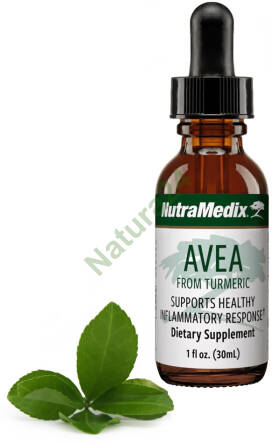



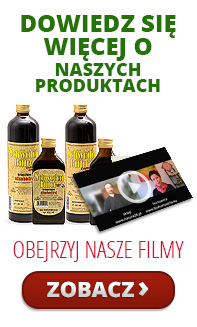
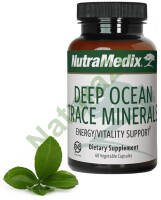
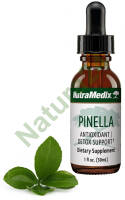
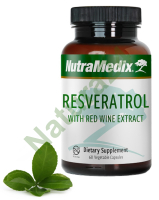
 Polish
Polish
 German
German
Wszystko przebiegło pomyślnie. Polecam!
SUPER KONTAKT, B. SZYBKA DOSTAWA, SUPER PRODUKT, SUPER SPRZEDAJACY - POLECAM BAAAARDZO
Z ogromną przyjemnością wystawiam komentarz POZYTYWNY!!! Wszystko sprawnie, miło i przyjemnie!!! Przesyłka ekspresowa.!!! GORĄCO POLECAM
Przesyłka wysłana w błyskawicznym tempie Juz na drugi dzień rano.Polecam w 100%.
olejek rycynowy rewelacyjny